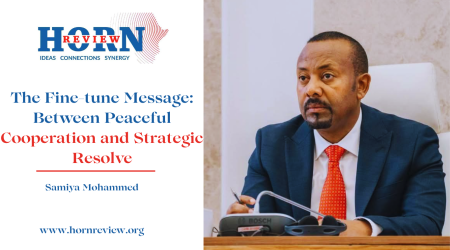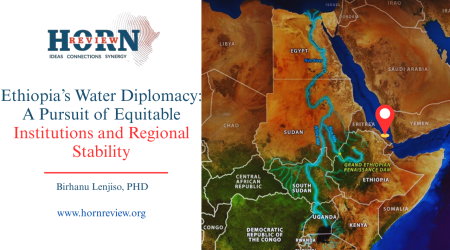
5
Nov
The Strategic Abandonment and Enduring Shadow of Henry Kissinger in Ethiopia
For two decades, Imperial Ethiopia stood as the most reliable, steadfast ally of the United States in Africa, a relationship anchored by the critical 1953 defense agreement and the presence of the crucial Kagnew military communications base. Yet, this loyalty was callously discarded during the tenure of Henry Kissinger, whose foreign policy dictated a strategy of geopolitical triage. Under the restrictive mandate of the Nixon Doctrine which aimed for strategic retrenchment and limited overseas involvement. Ethiopia’s vast regional importance was deliberately redefined as a peripheral concern, expendable in favor of higher-stakes maneuverings in the Middle East.
Kissinger’s realpolitik prioritized securing oil stability and achieving disengagement agreements between Israel and key Arab states, particularly Egypt. This focus meant that the decades-old alliance with Addis Ababa became a liability, destined for managed decline. The strategic decision was not one of decisive engagement against rising regional threats, but a calculated withdrawal designed to avoid deep military involvement and high investment costs in a region Washington deemed secondary to Arab-Israeli conflict resolution.
Emperor Haile Selassie, a seasoned statesman whose outlook was tragically forged by betrayal at the League of Nations during the Italian conquest, possessed a prophetic understanding of the escalating danger of a Communist-Moslem thrust into the Horn highlighting the shared.
Haile Selassie’s experiences combined with pattern of being encircled by predominantly Muslim neighbors, produced in him a siege mentality toward regional affairs. To the Emperor, Soviet arms shipments to Somalia, Sudan, and Yemen appeared not merely as isolated acts of support but as part of a larger Communist-Moslem thrust into the Horn of Africa. He believed Ethiopia stood at the frontline of this encroachment, its survival intertwined with the balance of power in the region.
From this perspective, the emperor viewed a strong partnership with the United States as essential. Ethiopia, in his eyes, was not merely a recipient of Western support but a bulwark; an anchor of stability and a loyal ally positioned to defend shared interests against Communist expansion. He feared that if the West once again underestimated the threat, as it had during the 1930s, Ethiopia would face isolation and peril, and history would repeat its tragic course.
A detailed U.S. assessment, directed by Kissinger himself, confirmed that the emperor’s fears were altogether rational; acknowledging the 1969 leftist coups in Sudan and Somalia, and the Soviet Union’s role as the sole arms supplier to these hostile neighbors, including the dramatically increased militant Arab states support for the Eritrean Liberation Front (ELF).
Despite possessing all the necessary intelligence confirming Ethiopia’s worsening security, the U.S. policy response was a devastating refusal to honor its historic commitment. Kissinger’s staff judged that Ethiopia’s security threat was more potential than immediate and Ethiopia’s military strength is adequate to deal with any military attack which can be deemed at all likely. Further they argued that the emperor’s frantic requests for massive new military assistance were driven by a fear that the U.S.
intended to terminate the Military Assistance Program (MAP). This fear, which U.S. analysts recognized as altogether rational, was met not with reassurance and supplies, but with denial. By refusing to authorize military modernization and instead prioritizing external assessments of stability, Washington effectively starved the Ethiopian military, the very institution whose loyalty was essential for regime survival, of the necessary tools, thereby inadvertently facilitating its eventual disillusionment and the Derg military coup.
Kissinger’s identity as a Jewish immigrant proved a tactical asset in Middle East diplomacy, enabling him to navigate prejudices as a bridge figure with Arabs like Sadat. This asset, however, came at the expense of Ethiopia.
Ethiopia’s defensive decision to accept essential military aid from Israel, a strategic necessity due to the lack of sufficient U.S. commitment, was weaponized by Arab states. Recognizing Ethiopia as Israel’s key security partner on the Red Sea littoral, Arab states formally condemned the relationship and escalated their aid to the Muslim-led ELF. Full American commitment to Ethiopia would have directly antagonized the moderate Arab partners whose stability Kissinger prioritized for global oil security. In this calculation, the national security and territorial integrity of Christian Ethiopia, a bulwark against Communism, were deemed a necessary sacrifice to advance high-stakes diplomacy with Arab capitals.
Archival records reveal the chilling detachment in Washington’s view of the conflict. During internal discussions about resupply authorization for Ethiopia, Secretary Kissinger openly speculated about the composition of the populations involved. When the internal dynamics were explained as a conflict between a Muslim insurgent minority, backed by Arabs, and the Coptic Christian population, Kissinger inquired, “Are the Copts black? Are they all black?”.
The official response clarified that they were not really black, but were basically Semitic people, with dark skins, intermarried with Hamitic people over centuries, and were what were historically called Abyssinians. Furthermore, the Christian populations on both sides of the Eritrean border were described as part and parcel of the Tigrean people, historically central to Ethiopian dynasties.
Besides that, Kissinger made a stark, prescient, and unsettling declaration: “I don’t assume that this war is going to end—I think it is going to end with Eritrean independence”. This explicit pre-acceptance of Ethiopia’s territorial dismemberment proves that, at the highest levels, the country’s integrity was already considered expendable in favor of managed disengagement.
The final rupture arrived when the new Derg regime, inheriting the strategic void created by U.S. neglect, abandoned the emperor’s balancing act in favor of survival and ideological realignment. The diplomatic signal was fired on November 10, 1975, when Ethiopia voted in favor of UN Resolution 3379, which declared Zionism to be a form of racism and racial discrimination.
This vote, which provided an ideologically acceptable pretext for Washington to formalize its planned abandonment, was met with intense condemnation by Kissinger and his staff. The vote was a clear declaration by the new government that Ethiopia would no longer serve as a compliant, neglected tool of Western foreign policy. 12
The ultimate act of sovereignty followed shortly thereafter. On April 29, 1977, coinciding with the final American departure, the Derg regime officially abrogated the 1953 United States-Ethiopian Mutual Defense Assistance Agreement and terminated the lease on Kagnew Station. This action was the definitive response to years of American policy that had prioritized strategic expediency over the lifeblood of a decades-long alliance.
The consistent U.S. policy of strategic limitation, diplomatic severance, and arms termination under Kissinger created a critical geopolitical vacuum. This void was immediately and effectively filled by the Soviet Union, which executed a swift and decisive ally swap, abandoning Somalia to embrace the newly radicalized Derg regime.
The devastating consequence of this calculated abandonment was the eruption of the Ogaden War in 1977. Left militarily vulnerable by the cessation of U.S. arms, the Derg was forced to seek immediate and comprehensive military support, leading directly to the massive Soviet intervention that militarized the region for decades. The failure of the Nixon Doctrine in the Horn was rooted in the cynical assumption that the Soviets would simply leave the vacuum unfilled. Instead, Kissinger’s policy of triage resulted in the Soviet Union securing a dominant strategic position in the Horn, confirming that short-term diplomatic convenience led to the prolonged and tragic conflict of the region.
Lessons for Contemporary Ethiopian Statecraft
The strategic imperative for contemporary Ethiopian diplomacy is to prioritize stability and access to diversified capital and arms over symbolic diplomatic signaling in multilateral forums. Maintaining the latitude to exercise neutrality on contentious global votes remains essential for preserving relationships crucial to national stability.
A key lesson for the present is that internal conflicts—whether ethnic, regional, or constitutional—must be resolved domestically and decisively. Prolonged internal fragmentation invites foreign intervention, as witnessed during the Eritrean struggle. Denying external actors an internal vector for influence is fundamental to preserving sovereignty and regional stability in the Red Sea corridor.
The legacy of Henry Kissinger demonstrates the peril of strategic triage in great power diplomacy. Guided by the Nixon Doctrine’s restraint and the pursuit of a Middle Eastern order favorable to U.S. interests, Kissinger’s policies rendered a loyal Ethiopian ally expendable. This was not a failure of intelligence but a deliberate calculation—Ethiopia’s collapse was accepted as collateral to higher-stakes objectives elsewhere. Washington’s refusal to modernize Ethiopia’s military alienated the armed forces and hastened the emperor’s fall.
For contemporary Ethiopian statecraft, this history stands as a lasting warning against dependency and underscores the enduring necessity of sovereign self-reliance, strategic diversification, and internal cohesion as the foundation of durable national security.
By Tsega’ab Amare, Researcher, Horn Review










